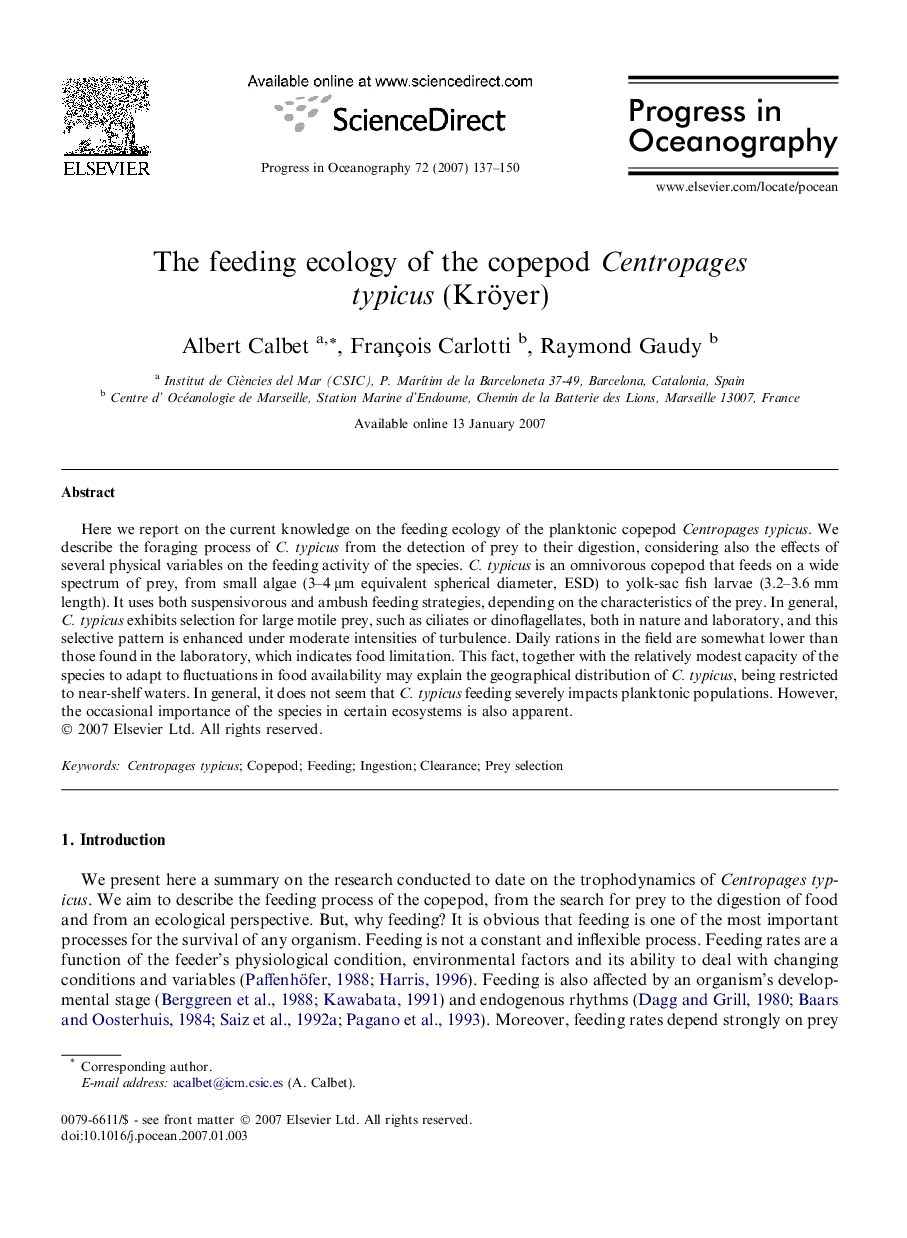| Article ID | Journal | Published Year | Pages | File Type |
|---|---|---|---|---|
| 4553825 | Progress in Oceanography | 2007 | 14 Pages |
Here we report on the current knowledge on the feeding ecology of the planktonic copepod Centropages typicus. We describe the foraging process of C. typicus from the detection of prey to their digestion, considering also the effects of several physical variables on the feeding activity of the species. C. typicus is an omnivorous copepod that feeds on a wide spectrum of prey, from small algae (3–4 μm equivalent spherical diameter, ESD) to yolk-sac fish larvae (3.2–3.6 mm length). It uses both suspensivorous and ambush feeding strategies, depending on the characteristics of the prey. In general, C. typicus exhibits selection for large motile prey, such as ciliates or dinoflagellates, both in nature and laboratory, and this selective pattern is enhanced under moderate intensities of turbulence. Daily rations in the field are somewhat lower than those found in the laboratory, which indicates food limitation. This fact, together with the relatively modest capacity of the species to adapt to fluctuations in food availability may explain the geographical distribution of C. typicus, being restricted to near-shelf waters. In general, it does not seem that C. typicus feeding severely impacts planktonic populations. However, the occasional importance of the species in certain ecosystems is also apparent.
